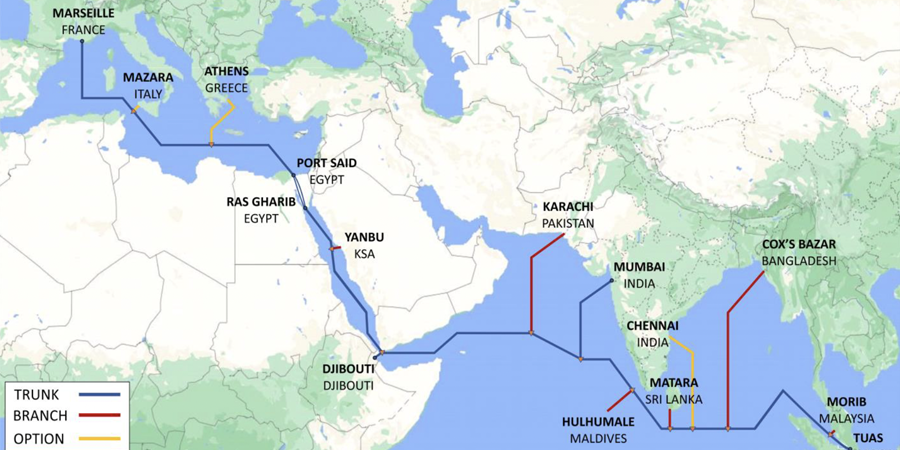The Southeast Asia-Middle East-Western Europe 6 (SEA-ME-WE 6) consortium announced that construction has commenced on a 19,200 km-long submarine cable system connecting multiple countries between Singapore and France. SEA-ME-WE 6 will offer one of the lowest latencies available between Southeast Asia, Middle East and Western Europe, transferring more than 100 terabytes per second, the equivalent of 40,000 high-definition videos each second.
The SEA-ME-WE 6 consortium includes Bangladesh Submarine Cable Company, Bharti Airtel Ltd. (India) Dhiraagu (Maldives), Djibouti Telecom, Mobily (Saudi Arabia), Orange (France), Singtel (Singapore), Sri Lanka Telecom, Telecom Egypt, Telekom Malaysia, Telin (Indonesia), and Trans World Associates (Pakistan).
SEA-ME-WE 6 will have more fibre pairs and more than double the capacity as compared to previous SEA-ME-WE cables.
Yue Meng Fai, chairperson of the SEA-ME-WE 6 management committee and senior director, consortium cable engineering, Singtel, said, “We started planning and designing the SEA-ME-WE 6 cable more than two years ago, having anticipated the rising demand for reliable, high speed and low latency connectivity led by global digitalisation. With even more people working and living remotely today, this new cable system will help all parties provide faster broadband access to users along this multi-regional data superhighway, while supporting surges from changing working and consumption habits from 5G, remote working needs and video streaming demands, among others. By building more capacity and flexibility today, we are ensuring that we are ready to serve the billions relying on our networks in future.”
With the unpredictability of connectivity demands coupled with the dynamic digital transformation that is ushering more and more consumers in Asia through Europe into a digitalised reality, SEA-ME-WE 6 provides an additional layer of diversity and resilience for the high traffic density route between Asia and Europe, strengthening the overall network of each consortium partner, through trans-Egypt’s new geo diversified crossings and landing points.
The added flexibility means service providers in the consortium can rapidly scale capacity, protect traffic from faults and lower total cost of network ownership.
SEA-ME-WE 6 connects multiple countries from Singapore to France as it traverses Malaysia, Bangladesh, Sri Lanka, Maldives, India, Pakistan, Djibouti, Saudi Arabia and Egypt. The system is expected to be completed by the first quarter of 2025.
